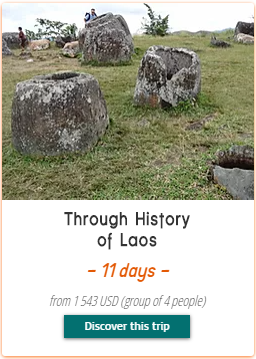Elephant in Laos
- Charly Renaudin

- Mar 22, 2018
- 3 min read
Updated: Jul 23, 2020
Lao PDR has a rich culture and history in which the Asian Elephant plays a prominent role.
Laotian people consider the Asian elephant as a symbol of power and potential of the forest.
Laos, Formerly called Lane Xang or "the kingdom of the million elephants", used to have several thousands Asian elephants. Statues and carvings of the pachyderms adorn temples and houses throughout the country. The Asian elephant also features in spiritual and cultural ceremonies and festivals held throughout Laos.
Laotian people and elephants, a long story
Asian elephants have been domesticated for thousands of years. The powerful beasts have been employed to move heavy objects, such as felled trees, to carry humans on their backs, and even to wage war. For many hundreds of years elephants have helped humans to explore and exploit wild landscapes in Laos. Elephants were extensively used in logging operations to transport cut timber and supplies over terrain that is impassable for vehicles. As new technologies emerge logging elephants are less required for such operations and are increasingly used in the tourism sector.
How many elephants left in Laos?
Nowadays, there are around 1000 left of these pachyderms, about are 400 wild, the other 600 are domesticated. In the whole country, several organizations fight to protect this endangered specie. More and more initiatives are launch to contribute to help them, take care of them, and develop a respectful tourism.
Festival of the elephants
The ‘Elephant Festival’ is an annual event which draws thousands of national and international visitors. It brings together domestic elephants from five districts in Xayabouly Province. In 2018 there were more than 60 elephants at the festival. The festival aims to raise awareness of Asian elephants, their important role in the history and culture of Laos, and to promote national tourism that can generate income and help conserve domestic elephants.

Why do the elephants have huge ears and long trunk ?
Elephant ears radiate heat to help keep these large animals cool, but sometimes that isn’t enough. Elephants are fond of water and enjoy showering by sucking water into their trunks and spraying it all over themselves.
An elephant’s trunk is actually a long nose with many functions. It is used for smelling, breathing, trumpeting, drinking, and also for grabbing things—especially a potential meal. The trunk alone contains about 100 000 different muscles. Asian elephants have a finger like feature on the end of their trunk that they can use to grab small items. (African elephants have two.)
Elephants use their tusks to dig for roots and water, strip bark from trees, and even fight each other. Unfortunately their ivory has gotten them into a lot of trouble. Because ivory is so valuable to some humans, many elephants have been killed for their tusks. This trade is illegal today, but it has not been completely eliminated.
What does an elephant eat ?
Elephants eat roots, grasses, fruit, and bark, and they eat a lot of these things. An adult elephant can consume up to 300 pounds (136 kilograms) of food in a single day. These hungry animals do not sleep much, and they roam over great distances while foraging for the large quantities of food they require to sustain their massive bodies. Female elephants live in family herds with their young, but adult males tend to roam on their own.
Pregnancy and birth
Having a baby elephant is a serious commitment. Elephants have a longer pregnancy than any other mammal—almost 22 months. A female elephant usually give birth to one calf every two to four years. At birth, elephants already weigh some 200 pounds (91 kilograms) and stand about three feet (1 meter) tall.

#elephant #culture #animals #travel #traveling #vacation #visiting #trip #holiday #vacation #travelling #tourism #tourist #traveller #explore #travelblogger #traveltheworld #traveladdict #adventure #paradise #visiting #aroundtheworld #trippy #trip #travelpics #travelpic #discovertheworld #travel_captures #travelblog #frenchtravel #luxuryexperiences #goodtime #picoftheday #frenchtraveler #travelwithme #enjoyyourlife
#wanderlust #adventureseeker #doyoutravel #travelmore #goexplore #wonderfulplaces #openmyworld #lovetotravel #adventurethatislife #roamtheplanet #travelbloggers #travelblogging #tblogger #thattravelblog #wanderer #travelholic #sayabouryelephantconservationcenter






















Comments